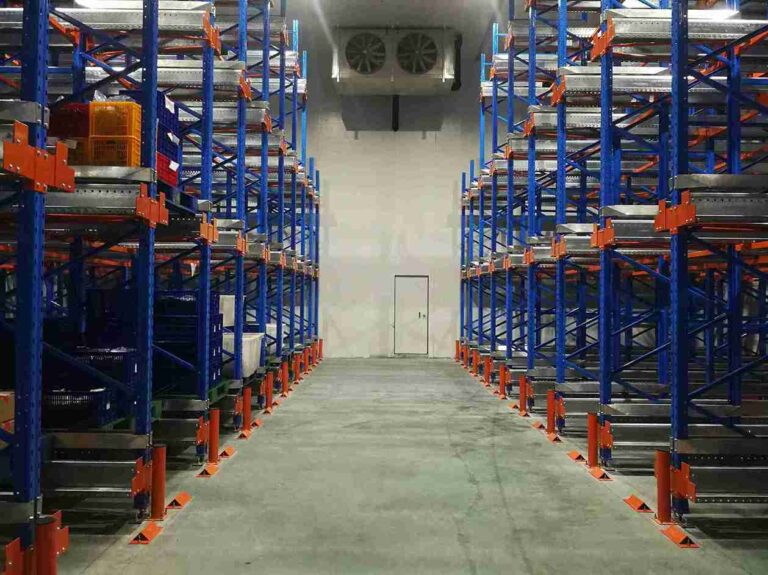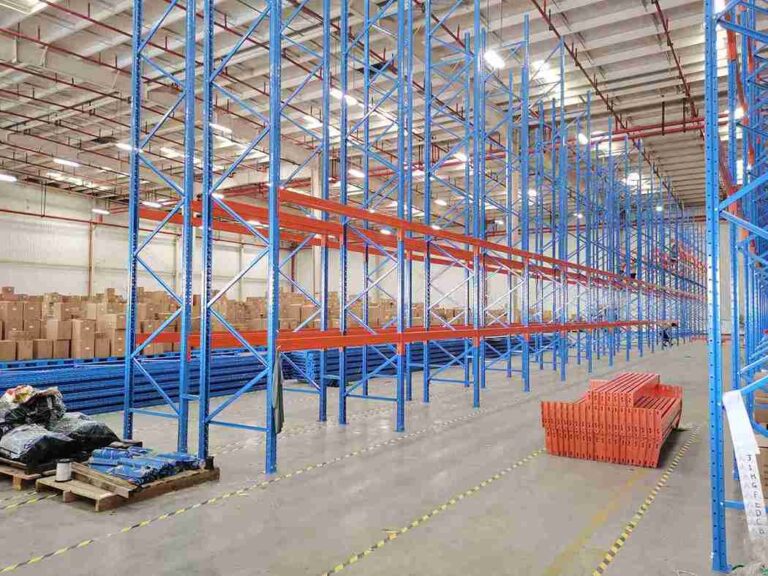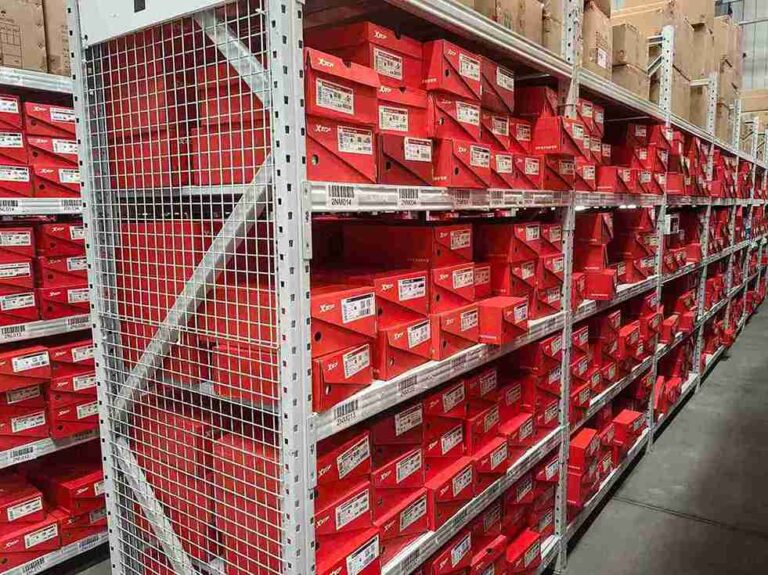📐 "First 50 Enterprise Queries Get Custom 3D Warehouse Design" Plan

The selection of shelf racking for pharmaceutical storage is a critical decision that extends far beyond simple storage logistics. It represents a fundamental commitment to product safety, regulatory adherence, and patient well-being. In an industry where the margin for error is zero, the infrastructure that supports the entire supply chain must be beyond reproach. This comprehensive analysis explores the multifaceted role of modern shelf racking for pharmaceutical storage, detailing how a meticulously designed system acts as a proactive guardian of product integrity, rather than a passive liability.
For companies seeking robust, audit-ready solutions, understanding the engineering and regulatory nuances of shelf racking for pharmaceutical storage is the first step toward mitigating risk and ensuring unwavering quality control from raw material to finished goods.

H2: The High Stakes of Storage: Why Standard Industrial Racking Falls Short
Utilizing standard industrial shelf racking in a pharmaceutical context introduces a catalog of unacceptably high risks. The unique, non-negotiable demands of GMP and other global standards render conventional designs fundamentally inadequate for protecting sensitive products.
H3: The Insidious Threat of Particulate Contamination and Corrosion
The environmental conditions within a pharmaceutical warehouse, even ambient ones, are far more aggressive than a typical industrial setting. Fluctuations in humidity, temperature changes, and cleaning agents can rapidly degrade standard finishes.
-
Particulate Generation as a Primary Failure Mode: As powder coatings or paint on standard shelf racking chip, flake, or degrade, they become a persistent source of visible and microscopic particles. These contaminants can settle on product packaging, primary containers, and even migrate into controlled environments during logistics operations. This direct contamination violates the core tenets of GMP, potentially leading to product adulteration, patient harm, and severe regulatory action.
-
Structural Degradation from Subsurface Corrosion: The corrosion of shelf racking for pharmaceutical storage is not merely a cosmetic concern. Rust formation indicates a breakdown of the protective barrier, leading to pitting and a gradual reduction in the structural cross-section of beams and uprights. A rack initially rated for a specific load may become dangerously compromised, risking a catastrophic collapse that could destroy invaluable inventory and halt production indefinitely.
H3: Inherent Design Flaws that Breach Contamination Control Protocols
A close inspection of standard pallet racking reveals a landscape fraught with contamination risks—sharp corners, overlapping joints, and hollow sections that are sealed yet inaccessible.
-
Dead Zones and Microbial Harborage Points: The sharp, 90-degree angles and horizontal ledges common in standard shelf racking are impossible to clean effectively. These areas become reservoirs for dust, moisture, and microbial growth, creating a persistent contamination source that can spread throughout the facility during cleaning or operational activities.
-
Inadequate Beam and Upright Profiles: Traditional beam designs with perforations or complex shapes actively collect debris. The design of shelf racking for pharmaceutical storage must prioritize smooth, radiused corners and solid or cleanly designed profiles that facilitate complete runoff of cleaning solutions and prevent the accumulation of any material.
H2: The Engineering Pillars of GMP-Compliant Pharmaceutical Storage Racking
True compliance is engineered into the system from the ground up. It involves a deliberate selection of materials, finishes, and structural designs that align with the rigorous demands of the pharmaceutical industry.
H3: Advanced Material Science: Selecting the Substrate for Safety
The base material is the first and most critical line of defense in any shelf racking for pharmaceutical storage system.
-
Stainless Steel (Grades 304 and 316L): For environments storing sterile products, potent compounds, or in areas requiring frequent aggressive sanitization (e.g., wash-down areas), grades 304 and 316L stainless steel are the unequivocal standard. The chromium content forms a passive, self-repairing oxide layer that resists corrosion. Grade 316L, with its molybdenum additive, offers superior resistance to chlorides and acidic environments, making it the preferred choice for the most challenging conditions.
-
High-Performance Epoxy and Hybrid Coatings: For non-sterile storage of packaged goods in controlled ambient environments, advanced epoxy or epoxy-polyester hybrid coatings can be suitable. The critical factor is the application process, which must include robust pre-treatment stages like zinc phosphating or chromating to ensure superior adhesion. The final coating must be tested for resistance to a broad spectrum of pharmaceutical cleaning and sanitizing agents.
H3: Design for Decontamination: Cleanability as a Core Principle
The architecture of shelf racking for pharmaceutical storage must be subservient to the process of cleaning and sanitization.
-
Radiused Corners and Sealed Welds: Every potential corner—from the top of an upright to the connection point of a beam—must feature a smooth, radiused curve. All welds must be continuous, ground smooth, and passivated to eliminate microscopic crevices where biofilms can initiate.
-
Fully Sealed Structural Members: Upright columns must be fully sealed with certified caps at the top to prevent moisture, dust, or pests from entering the internal cavity. Beam ends should be designed with seamless, capped profiles to eliminate any void that could become a contamination reservoir. This level of sealing is a hallmark of professional shelf racking for pharmaceutical storage.
H3: Certified Structural Integrity and Dynamic Load Management
In the pharmaceutical world, a load rating is a promise of consistent performance under all documented conditions, not just a static measurement.
-
Third-Party Certified Load Capacities: Every component of the shelf racking for pharmaceutical storage system must be backed by certification from a Registered Professional Engineer, adhering to recognized standards like ANSI MH16.1. This documentation is not optional; it is a foundational element of the installation qualification (IQ) package.
-
Integrated Impact Protection and Resilience: Given the use of material handling equipment, a robust shelf racking for pharmaceutical storage design incorporates features like heavy-duty, replaceable column guards, protective railings, and reinforced base plates. These features ensure that a minor operational impact does not compromise the system’s structural or GMP integrity.
H2: Systemic Integration: The Racking System as an Environmental Control Component
A warehouse is a controlled environment, and the storage system is a key determinant of its performance. Poorly planned shelf racking for pharmaceutical storage can disrupt the very environmental conditions it is meant to support.
H3: Optimizing Airflow for Consistent Temperature and Humidity Mapping
A dense, poorly arranged storage layout can create stagnant air pockets, leading to hot or cold spots that invalidate costly temperature mapping studies.
-
Layouts Engineered for HVAC Performance: The configuration of shelf racking for pharmaceutical storage must be designed in concert with the facility’s HVAC design. This often involves orienting aisles to align with laminar airflow patterns, ensuring that conditioned air circulates uniformly around all stored products, maintaining validated parameters.
-
Mandated Clearances and Spatial Planning: Strict protocols govern the installation of shelf racking for pharmaceutical storage, enforcing precise clearances from walls, ceilings, and air supply/return vents. This prevents the creation of micro-environments where temperature and humidity can deviate, ensuring the entire stored inventory remains within its specified range.
H3: Meeting Cleanroom Standards for Critical Storage Applications
For storage within classified areas (Grade C/D or higher), the shelf racking for pharmaceutical storage must itself comply with cleanroom particulate standards.
-
Electropolishing for Ultra-Smooth Surfaces: Beyond standard stainless steel fabrication, components for cleanroom shelf racking for pharmaceutical storage are often electropolished. This electrochemical process removes a thin surface layer, yielding a microscopically smooth, mirror-like finish that drastically reduces particulate shedding and enhances cleanability.
-
Mandatory Passivation of All Components: Every piece of stainless steel shelf racking for pharmaceutical storage, especially after welding or cutting, must undergo a rigorous passivation process. This acid treatment removes free iron from the surface, fortifying the protective chromium oxide layer and maximizing corrosion resistance.
H2: The Automated Evolution: Enhancing Integrity Through Technology
The modern concept of product integrity is shifting from passive protection to active, intelligent management. Automated systems transform the shelf racking for pharmaceutical storage from a static fixture into a dynamic, data-driven component of the quality system.
H3: Automated Storage and Retrieval Systems (AS/RS): The Pinnacle of Control
Integrating an AS/RS with the shelf racking for pharmaceutical storage framework delivers profound benefits for quality assurance that transcend space savings.
-
Drastic Reduction of Human-Induced Errors: Automated cranes and shuttles handle products with flawless precision, eliminating mis-picks, incorrect placement, and physical damage from manual contact. This is a critical control point for data and product integrity.
-
Unbreachable Traceability and Audit Trails: Every single interaction with the shelf racking for pharmaceutical storage is logged by the Warehouse Management System (WMS). This creates an immutable, granular record of each pallet’s exact location, duration of storage, and handling history, providing irrefutable evidence during regulatory audits or batch recall investigations.
-
Superior Stability of the Controlled Environment: By consolidating inventory into a dense, high-bay configuration with minimal open aisles, an AS/RS makes the environmental envelope smaller and more efficient to control. This leads to enhanced temperature and humidity stability and significant energy savings, all managed within the advanced shelf racking for pharmaceutical storage structure.
H3: High-Density Mobile Systems for Archive and High-Security Storage
For critical materials like retained samples, product archives, and stability study batches, high-density mobile shelving offers an unparalleled balance of security and integrity.
-
Enhanced Environmental Consistency: By eliminating multiple fixed aisles, mobile shelf racking for pharmaceutical storage condenses the storage footprint into a solid block. This mass is inherently more stable and easier to maintain at a consistent temperature and humidity, protecting the viability of long-term stability samples.
-
Integrated Physical and Access Security: A single, securable aisle allows for the implementation of robust access controls, including keyed locks, electronic keypads, and biometric scanners. This ensures a verifiable chain of custody for every item stored within the mobile shelf racking for pharmaceutical storage system.
H2: The Audit-Ready Warehouse: Demonstrating Compliance Through Your Racking
When an investigator from the FDA or an auditor for EU GMP enters a warehouse, the state of the shelf racking for pharmaceutical storage communicates a powerful, immediate message about the company’s quality culture.
H3: The Non-Negotiable Documentation Suite: The DQ, IQ, OQ Trilogy
The shelf racking for pharmaceutical storage must be treated as a critical piece of process equipment, requiring full validation and documentation.
-
Design Qualification (DQ): A formal document demonstrating that the proposed design of the shelf racking for pharmaceutical storage meets all user requirement specifications (URS) and GMP principles.
-
Installation Qualification (IQ): A verified package including “as-built” drawings, material certificates, weld logs, and installation checklists, proving the shelf racking for pharmaceutical storage was installed exactly as designed and specified.
-
Operational Qualification (OQ): Documented evidence that the installed shelf racking for pharmaceutical storage system functions as intended under operational loads, including successful load tests and verification of all safety and operational features.
H3: Fostering a Proactive Culture of Inspection and Maintenance
Compliance is a continuous activity, not a one-time project. A sustainable program for maintaining the shelf racking for pharmaceutical storage is essential.
-
Tiered Inspection Regimens: This includes daily visual checks by trained warehouse operators for obvious damage, supplemented by formal quarterly inspections by supervisory staff, and culminating in a comprehensive annual survey conducted by a certified rack inspector specializing in shelf racking for pharmaceutical storage.
-
Robust Corrective and Preventive Action (CAPA) Procedures: Any damage, corrosion, or non-conformance identified in the shelf racking for pharmaceutical storage must be logged, investigated, and resolved through a formal CAPA process. This demonstrates to auditors a closed-loop system for managing quality and risk.
H2: The Tangible Impact: A Tale of Two Outcomes
The financial and operational consequences of the choice in shelf racking for pharmaceutical storage are starkly clear in real-world scenarios.
-
The High Cost of Non-Compliance: A generic drug manufacturer utilized cost-effective, industrial-grade shelf racking in a warehouse storing packaged products. During a routine FDA audit, significant rust and coating delamination were observed on beams directly above open cartons. This resulted in a Form 483 observation, leading to a voluntary product recall, a costly shutdown for emergency replacement of the entire shelf racking for pharmaceutical storage system, and lasting reputational damage. The total financial impact was orders of magnitude greater than the initial savings.
-
The Return on Investment in Integrity: A biotech firm, launching a novel biologic therapy, partnered with specialists to design a facility with a fully integrated, automated shelf racking for pharmaceutical storage solution from the outset. The system, fabricated from 316L stainless steel, was a highlight during the pre-approval inspection. Auditors commended the forward-thinking design and meticulous documentation, facilitating a smooth approval process and accelerating the time-to-market for a critical therapy.
H2: Future-Proofing the Investment: Scalability and Smart Integration
The pharmaceutical industry is dynamic. A storage system must be inherently adaptable to changing product lines, batch sizes, and technological advancements.
-
Inherent Modularity and Reconfigurability: High-quality shelf racking for pharmaceutical storage is designed on a modular principle. This allows for seamless expansion in height and footprint, reconfiguration of aisle widths, and adaptation to new pallet sizes without the need for a complete system overhaul.
-
Pre-Engineered for Industry 4.0 Integration: The next generation of shelf racking for pharmaceutical storage is being designed as a platform for smart technology. This includes pre-configured mounting points for IoT sensors to monitor structural health, environmental conditions in real-time, and integration points for autonomous mobile robots (AMRs) that work in harmony with the static storage infrastructure.
H2: Conclusion: Making an Informed Decision on Storage Infrastructure
The integrity of a pharmaceutical product is the culmination of countless decisions, each layering upon the next to ensure ultimate safety and efficacy. The choice of shelf racking for pharmaceutical storage is one of the most fundamental of these decisions, representing a long-term commitment to quality. Treating this critical infrastructure as a simple commodity purchase is a significant and untenable risk in the modern regulatory landscape.
By mandating GMP-centric engineering, superior materials, seamless environmental integration, and a rigorous, documented maintenance culture, pharmaceutical companies can transform their warehouse from a potential liability into a bastion of compliance and reliability. The specialized shelf racking for pharmaceutical storage becomes a system that actively safeguards products, ensures patient safety, and protects the enterprise from profound regulatory and financial repercussions. The essential question for any stakeholder is not if they can justify the investment in proper shelf racking for pharmaceutical storage, but if they can possibly justify the catastrophic risks of compromise.
H2: Frequently Asked Questions (FAQs)
1. Beyond rust, what are the specific signs of coating failure we should look for during an inspection of our shelf racking for pharmaceutical storage?
Operators should be trained to identify more subtle signs than just rust. Key indicators include blistering (bubbles under the coating), peeling (flaking of the coating), chalking (a powdery residue on the surface), and discoloration. Any of these suggest the coating is no longer providing a continuous barrier and warrants immediate investigation and CAPA.
2. How does the design of shelf racking for pharmaceutical storage impact fire safety and sprinkler system effectiveness?
Improperly designed dense storage can create solid piles that block water from sprinkler systems from reaching a fire’s source. Compliant shelf racking for pharmaceutical storage layouts are engineered in consultation with fire safety regulations (e.g., NFPA) to include necessary flue spaces and clearances that allow water to penetrate the storage array, a critical consideration often overlooked in early planning stages.
3. What are the key differences between a standard load capacity calculation and one performed for a high-density automated shelf racking for pharmaceutical storage system?
Standard calculations often assume uniformly distributed, static loads. For high-density automated systems, the engineering analysis is far more complex. It must account for dynamic loads from the moving retrieval machine, potential impact forces, seismic activity (in certain regions), and the cumulative effect of the system’s weight and inventory on the building structure itself, requiring sophisticated finite element analysis (FEA).
4. For a multi-product facility, how do we zone different types of shelf racking for pharmaceutical storage (e.g., stainless steel vs. coated) effectively?
Zoning should be based on a formal risk assessment. High-risk areas (sterile API storage, quarantine, cold chain) typically mandate stainless steel shelf racking for pharmaceutical storage. Lower-risk zones (packaged finished goods in climate-controlled ambient) may utilize coated systems. The zoning must be clearly defined in facility layouts and SOPs, with physical demarcation where possible, to prevent cross-contamination and ensure correct material handling procedures are followed.
5. What is the expected lifecycle of a properly maintained GMP-compliant shelf racking for pharmaceutical storage system, and what are the key factors that influence it?
A well-maintained system using high-grade materials can have a functional lifecycle of 20+ years. The primary factors influencing this are: the aggressiveness of the storage environment (humidity, chemical exposure), the frequency and quality of preventative maintenance, the avoidance of damaging impacts, and the inherent modularity of the system to adapt to future process changes without requiring full replacement.
Welcome to contact us, if you need warehouse rack CAD drawings. We can provide you with warehouse rack planning and design for free. Our email address is: jili@geelyracks.com




